Nginx学习安装配置和Ftp配置安装
- 什么是代理?
- 什么是正向代理?
- 什么是反向代理?
- Nginx与负载均衡有什么联系?
- --------------------------------------------------------------------干货https://www.cnblogs.com/fengff/p/8892590.html--------
- PS:nginx 的安装路径 /usr/local/nginx
- Ngxin默认端口是80
-
PS: nginx 配置虚拟主机的三种方法
PS:
html就是基础的root目录
sbin放置脚本文件的地方,启动和关闭
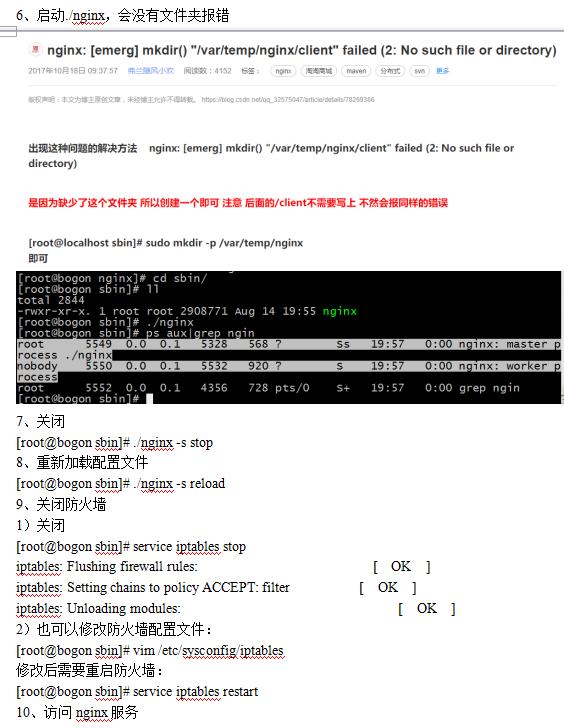

PS:安装时候遇见的问题
1.无法访问客户端
解决办法: 把防火墙关掉
2.不显示nginx页面,在nginx 配置页面添加 index.html
Ps:最最重要的就是看日志
----------------------配置文件讲解

PS: 一个Server就是一个虚拟主机


PS: 生产上会有F5,F5下面会挂载几个nginx,nginx会跳转不同节点上(跳转就是在本地配置的),upstream实现不同机器的配置
下面演示nginx配置访问
1.docker启动两个节点

2.nginx配置,访问那两个节点; 访问localhost:80/login的时候跳转到我的那两个节点
#user nobody; worker_processes 1; #error_log logs/error.log; #error_log logs/error.log notice; #error_log logs/error.log info; #pid logs/nginx.pid; events { worker_connections 1024; } http { include mime.types; default_type application/octet-stream; #log_format main '$remote_addr - $remote_user [$time_local] "$request" ' # '$status $body_bytes_sent "$http_referer" ' # '"$http_user_agent" "$http_x_forwarded_for"'; #access_log logs/access.log main; sendfile on; #tcp_nopush on; #keepalive_timeout 0; keepalive_timeout 65; #gzip on; upstream site { ip_hash; server 192.168.88.11:8081; server 192.168.88.11:8082; } server { listen 80; server_name localhost; #charset koi8-r; #access_log logs/host.access.log main; location /login { proxy_pass http://site; } #error_page 404 /404.html; # redirect server error pages to the static page /50x.html # error_page 500 502 503 504 /50x.html; location = /50x.html { root html; } # proxy the PHP scripts to Apache listening on 127.0.0.1:80 # #location ~ \.php$ { # proxy_pass http://127.0.0.1; #} # pass the PHP scripts to FastCGI server listening on 127.0.0.1:9000 # #location ~ \.php$ { # root html; # fastcgi_pass 127.0.0.1:9000; # fastcgi_index index.php; # fastcgi_param SCRIPT_FILENAME /scripts$fastcgi_script_name; # include fastcgi_params; #} # deny access to .htaccess files, if Apache's document root # concurs with nginx's one # #location ~ /\.ht { # deny all; #} } # another virtual host using mix of IP-, name-, and port-based configuration # #server { # listen 8000; # listen somename:8080; # server_name somename alias another.alias; # location / { # root html; # index index.html index.htm; # } #} # HTTPS server # #server { # listen 443 ssl; # server_name localhost; # ssl_certificate cert.pem; # ssl_certificate_key cert.key; # ssl_session_cache shared:SSL:1m; # ssl_session_timeout 5m; # ssl_ciphers HIGH:!aNULL:!MD5; # ssl_prefer_server_ciphers on; # location / { # root html; # index index.html index.htm; # } #} }
3.访问验证

-------------------------------------------------------------------------------------------------------
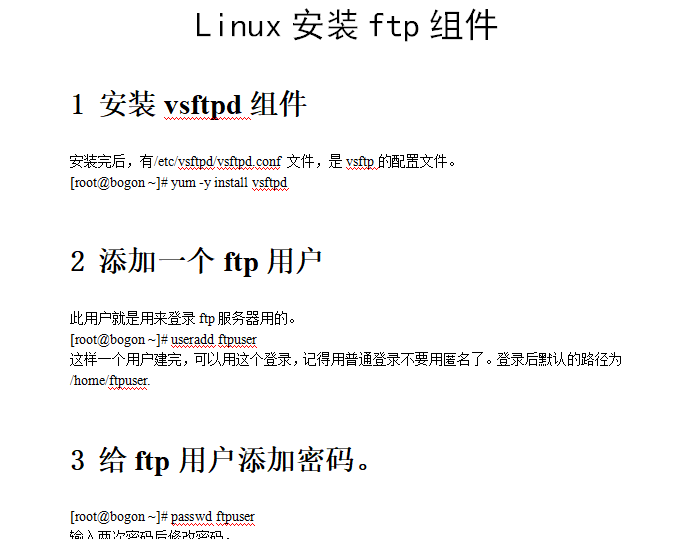
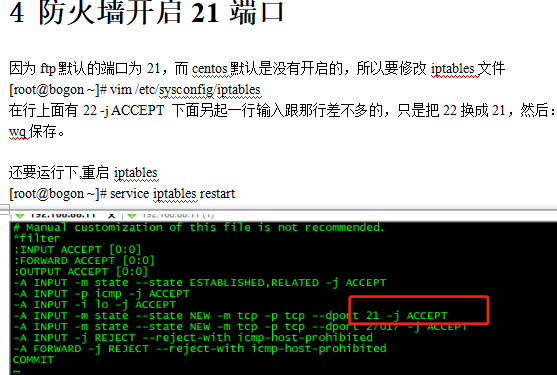
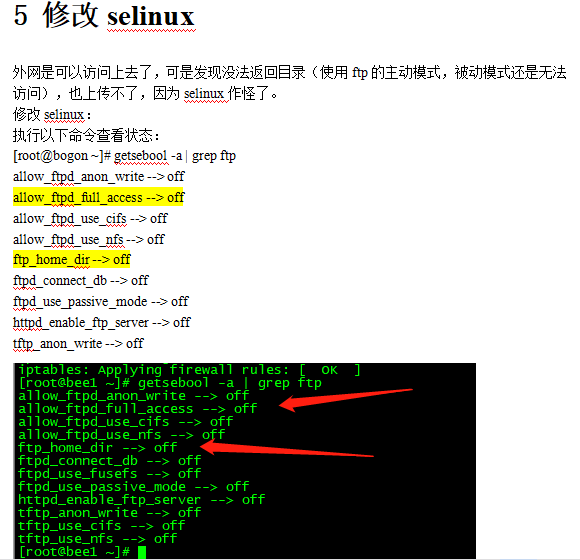
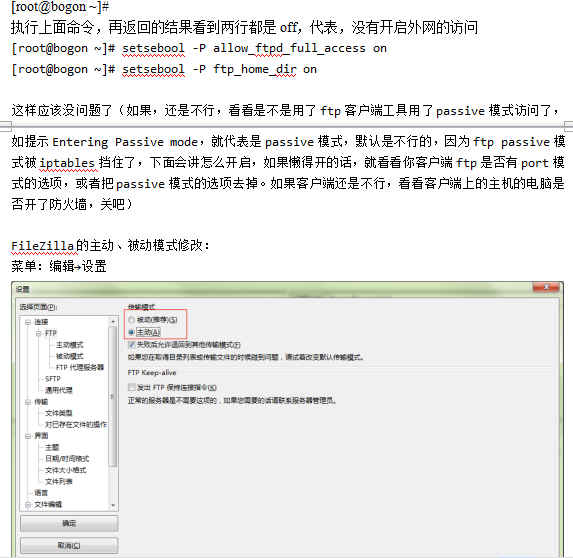
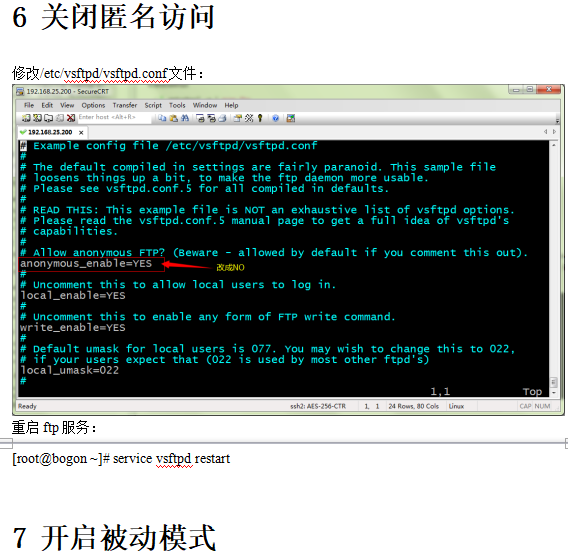
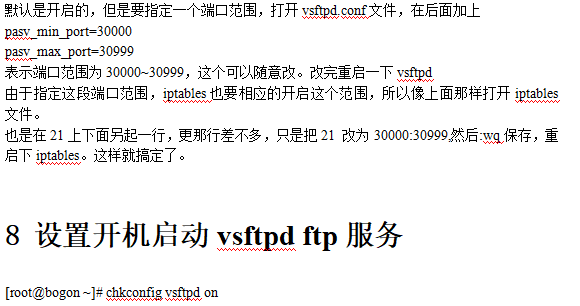

PS: Nginx定时日志输出配置
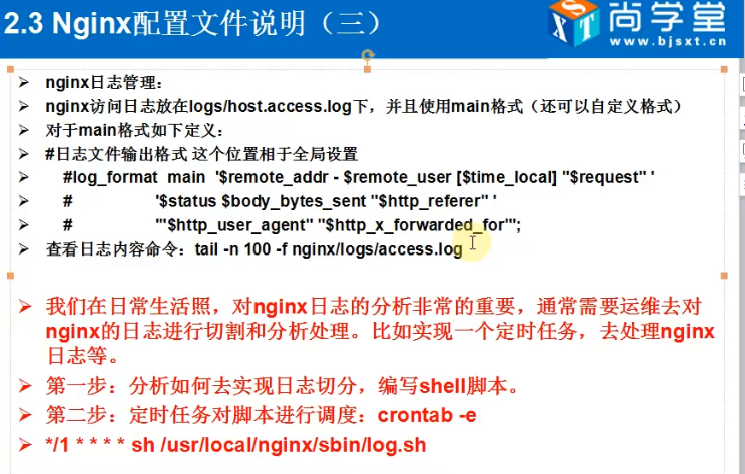
--------------------------------------------------
PS: 一个Server下可以配置多个location

#user nobody; #开启进程数 <=CPU数 worker_processes 1; #错误日志保存位置 #error_log logs/error.log; #error_log logs/error.log notice; #error_log logs/error.log info; #进程号保存文件 #pid logs/nginx.pid; #每个进程最大连接数(最大连接=连接数x进程数)每个worker允许同时产生多少个链接,默认1024 events { worker_connections 1024; } http { #文件扩展名与文件类型映射表 include mime.types; #默认文件类型 default_type application/octet-stream; #日志文件输出格式 这个位置相于全局设置 log_format main '$remote_addr - $remote_user [$time_local] "$request" ' '$status $body_bytes_sent "$http_referer" ' '"$http_user_agent" "$http_x_forwarded_for"'; #请求日志保存位置 #access_log logs/access.log main; #打开发送文件 sendfile on; #tcp_nopush on; #keepalive_timeout 0; #连接超时时间 keepalive_timeout 65; #打开gzip压缩 #gzip on; #设定请求缓冲 #client_header_buffer_size 1k; #large_client_header_buffers 4 4k; #设定负载均衡的服务器列表 #upstream myproject { #weigth参数表示权值,权值越高被分配到的几率越大 #max_fails 当有#max_fails个请求失败,就表示后端的服务器不可用,默认为1,将其设置为0可以关闭检查 #fail_timeout 在以后的#fail_timeout时间内nginx不会再把请求发往已检查出标记为不可用的服务器 #} #webapp #upstream myapp { # server 192.168.1.171:8080 weight=1 max_fails=2 fail_timeout=30s; # server 192.168.1.172:8080 weight=1 max_fails=2 fail_timeout=30s; #} #配置虚拟主机,基于域名、ip和端口 server { #监听端口 listen 80; #监听域名 server_name localhost; #charset koi8-r; #nginx访问日志放在logs/host.access.log下,并且使用main格式(还可以自定义格式) #access_log logs/host.access.log main; #返回的相应文件地址 location / { #设置客户端真实ip地址 #proxy_set_header X-real-ip $remote_addr; #负载均衡反向代理 #proxy_pass http://myapp; #返回根路径地址(相对路径:相对于/usr/local/nginx/) root html; #默认访问文件 index index.html index.htm; } #配置反向代理tomcat服务器:拦截.jsp结尾的请求转向到tomcat #location ~ \.jsp$ { # proxy_pass http://192.168.1.171:8080; #} #error_page 404 /404.html; # redirect server error pages to the static page /50x.html # #错误页面及其返回地址 error_page 500 502 503 504 /50x.html; location = /50x.html { root html; } # proxy the PHP scripts to Apache listening on 127.0.0.1:80 # #location ~ \.php$ { # proxy_pass http://127.0.0.1; #} # pass the PHP scripts to FastCGI server listening on 127.0.0.1:9000 # #location ~ \.php$ { # root html; # fastcgi_pass 127.0.0.1:9000; # fastcgi_index index.php; # fastcgi_param SCRIPT_FILENAME /scripts$fastcgi_script_name; # include fastcgi_params; #} # deny access to .htaccess files, if Apache's document root # concurs with nginx's one # #location ~ /\.ht { # deny all; #} } #虚拟主机配置: server { listen 1234; server_name bhz.com; location / { #正则表达式匹配uri方式:在/usr/local/nginx/bhz.com下 建立一个test123.html 然后使用正则匹配 #location ~ test { ## 重写语法:if return (条件 = ~ ~*) #if ($remote_addr = 192.168.1.200) { # return 401; #} #if ($http_user_agent ~* firefox) { # rewrite ^.*$ /firefox.html; # break; #} root bhz.com; index index.html; } #location /goods { # rewrite "goods-(\d{1,5})\.html" /goods-ctrl.html; # root bhz.com; # index index.html; #} #配置访问日志 access_log logs/bhz.com.access.log main; } # another virtual host using mix of IP-, name-, and port-based configuration # #server { # listen 8000; # listen somename:8080; # server_name somename alias another.alias; # location / { # root html; # index index.html index.htm; # } #} # HTTPS server # #server { # listen 443 ssl; # server_name localhost; # ssl_certificate cert.pem; # ssl_certificate_key cert.key; # ssl_session_cache shared:SSL:1m; # ssl_session_timeout 5m; # ssl_ciphers HIGH:!aNULL:!MD5; # ssl_prefer_server_ciphers on; # location / { # root html; # index index.html index.htm; # } #} }
posted on 2018-11-01 16:42 biyangqiang 阅读(368) 评论(0) 收藏 举报


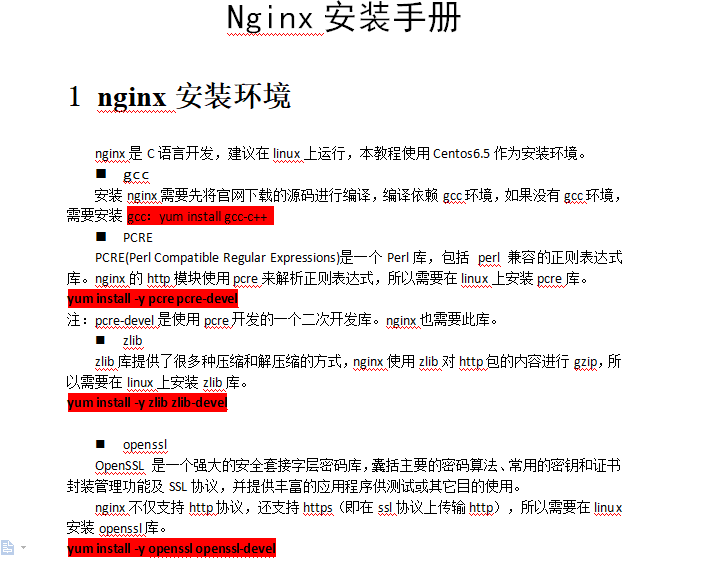
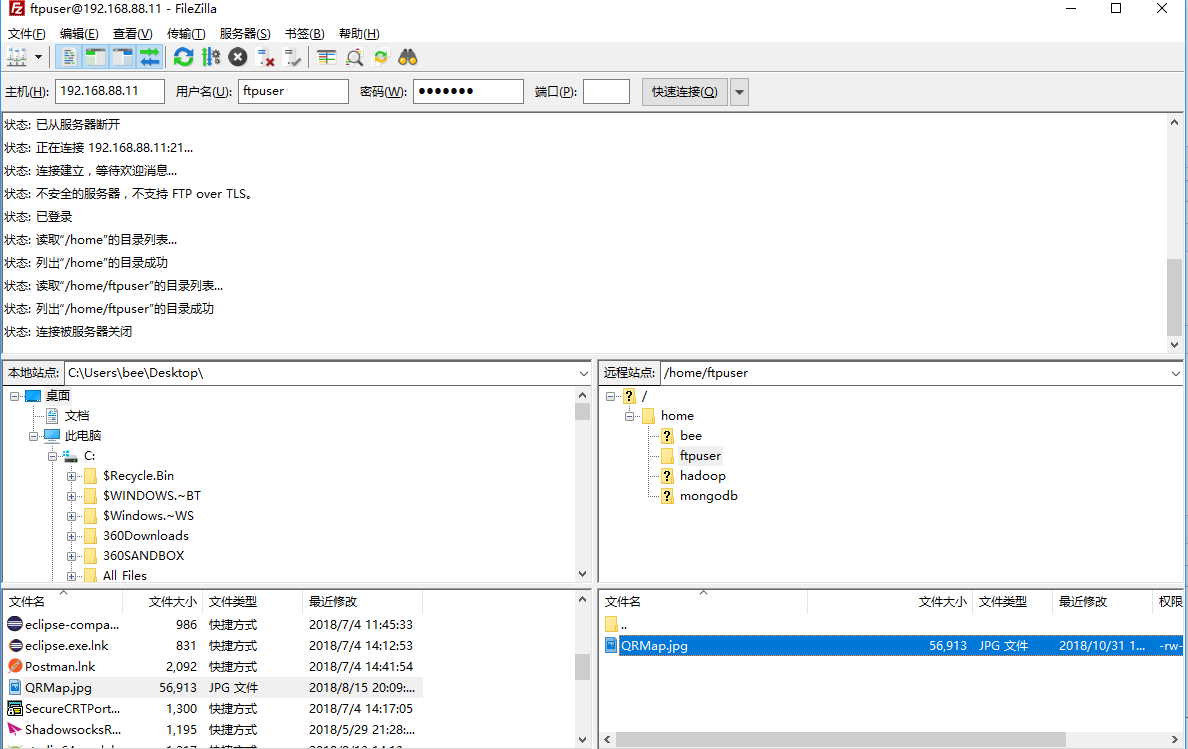


 浙公网安备 33010602011771号
浙公网安备 33010602011771号